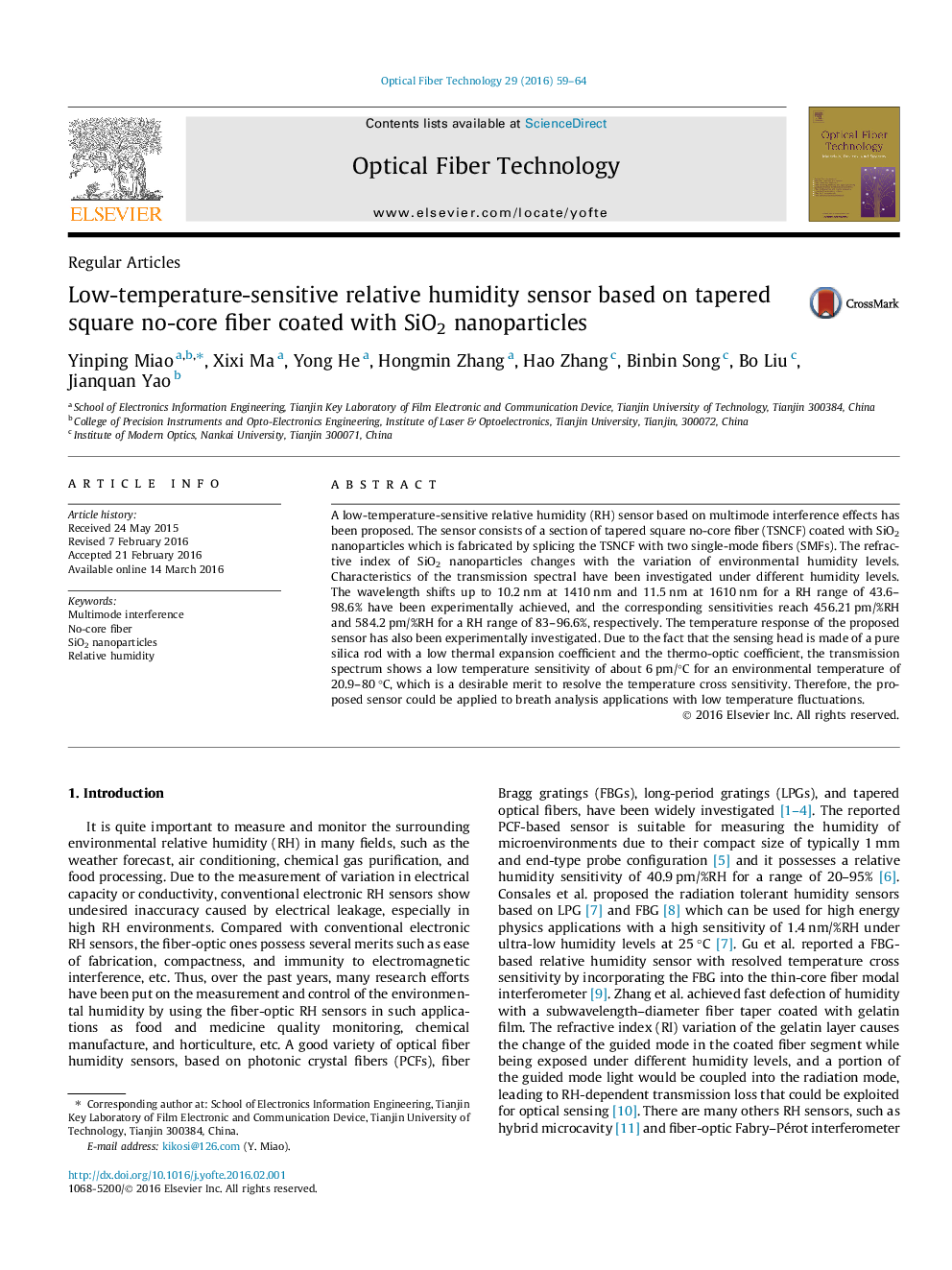| Article ID | Journal | Published Year | Pages | File Type |
|---|---|---|---|---|
| 463303 | Optical Fiber Technology | 2016 | 6 Pages |
•A low-temperature-sensitive relative humidity (RH) sensor based on multimode interference effects has been proposed.•The sensing head is made of a pure silica rod with a low thermal expansion coefficient and the thermo-optic coefficient.•It is a desirable merit to resolve the temperature cross sensitivity.
A low-temperature-sensitive relative humidity (RH) sensor based on multimode interference effects has been proposed. The sensor consists of a section of tapered square no-core fiber (TSNCF) coated with SiO2 nanoparticles which is fabricated by splicing the TSNCF with two single-mode fibers (SMFs). The refractive index of SiO2 nanoparticles changes with the variation of environmental humidity levels. Characteristics of the transmission spectral have been investigated under different humidity levels. The wavelength shifts up to 10.2 nm at 1410 nm and 11.5 nm at 1610 nm for a RH range of 43.6–98.6% have been experimentally achieved, and the corresponding sensitivities reach 456.21 pm/%RH and 584.2 pm/%RH for a RH range of 83–96.6%, respectively. The temperature response of the proposed sensor has also been experimentally investigated. Due to the fact that the sensing head is made of a pure silica rod with a low thermal expansion coefficient and the thermo-optic coefficient, the transmission spectrum shows a low temperature sensitivity of about 6 pm/°C for an environmental temperature of 20.9–80 °C, which is a desirable merit to resolve the temperature cross sensitivity. Therefore, the proposed sensor could be applied to breath analysis applications with low temperature fluctuations.
